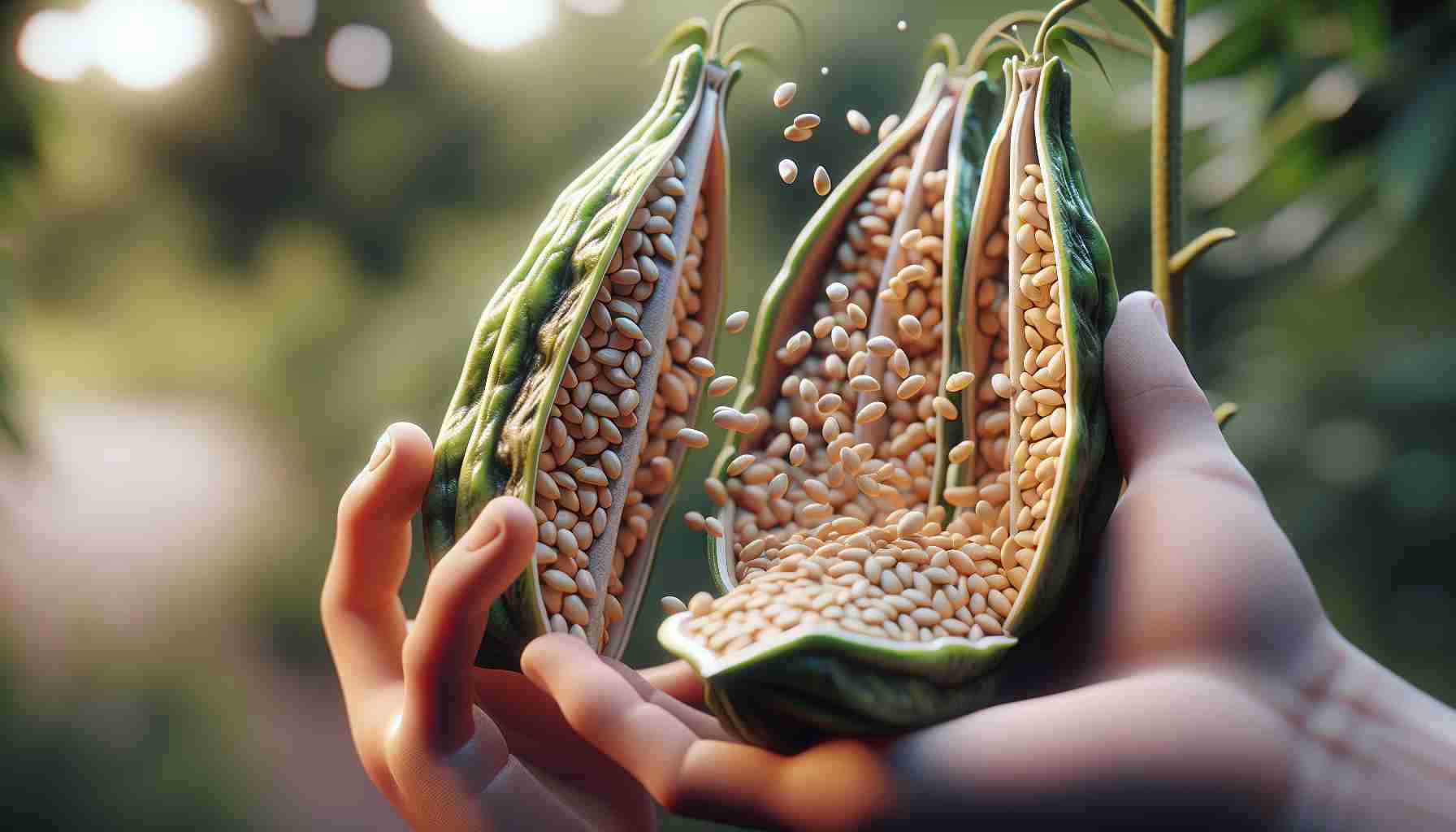Small Island, Big Taste: Sesame Takes Center Stage
In a delightful culinary event on January 15, students at a local elementary school on Shodoshima island savored innovative dishes featuring a new local delicacy: sesame. The aroma of golden sesame infused kimchi rice and sweet potatoes dusted with black sesame captivated the young diners.
This fresh sesame was cultivated by local farmers in previously fallow fields, marking a significant agricultural effort that began last year. Remarkably, it was harvested by the third-graders themselves during September and October, creating an educational and participatory experience.
The school lunch featured a special soup packed with freshly ground sesame sesame prepared by the children, giving them a hands-on approach to their meals. This initiative aims to position sesame as a cherished regional specialty, spearheaded by Kadoya Oil, a Tokyo-based sesame oil producer with a factory on the island. Collaborating closely with local producers and the town of Tonosho, Kadoya Oil not only seeks to enhance awareness but dreams of elevating the island’s sesame brand.
Last year alone marked the project’s inaugural harvest, yielding about 25 kilograms of this nutritious seed. The company aspires to integrate sesame-flavored dishes into menus at local restaurants, embracing Shodoshima’s unique sesame production in a delicious way.
Savoring Sustainability: The Rising Popularity of Sesame on Shodoshima Island
Introduction to Shodoshima’s Sesame Renaissance
Shodoshima Island, popularly known for its olive oil production, is experiencing a culinary and agricultural renaissance with the resurgence of sesame. Thanks to a grassroots initiative that involves local schools and farmers, sesame is not just a crop; it’s becoming a vital part of the local identity and culinary heritage. The island’s efforts to cultivate sesame have opened new avenues for sustainable agriculture and tourism.
Features of the Sesame Initiative
1. Cultivation Techniques: The sesame cultivated on Shodoshima is grown using environmentally friendly practices. This includes organic farming methods that promote soil health and reduce chemical usage, ensuring sustainability in the long run.
2. Educational Programs: Students are not only participating in the cultivation but also in the cooking process. This hands-on involvement fosters a deeper appreciation for food sources and nutrition. It also aims to educate the younger generation about the importance of local agriculture.
3. Community Collaboration: Kadoya Oil plays a pivotal role in this initiative by partnering with local farmers and the town of Tonosho. The collaboration focuses on marketing Shodoshima sesame as a premium product, thus elevating its status in the culinary market.
Use Cases and Culinary Innovations
– Restaurant Menus: Local eateries are beginning to incorporate sesame-infused dishes, attracting food enthusiasts and tourists who are keen to explore Shodoshima’s unique flavors.
– Health Benefits: Sesame seeds are rich in healthy fats, vitamins, and minerals. Promoting sesame as a local superfood enhances public health initiatives focused on nutrition.
Pros and Cons of the Sesame Initiative
Pros
– Economic Growth: The revitalization of sesame production is expected to boost the local economy through increased tourism and sales of sesame products.
– Cultural Identity: Reinforcing the island’s heritage through local culinary practices strengthens community bonds and national pride.
Cons
– Market Competition: As sesame gains popularity, producers might face competition from larger, established brands in the market.
– Sustainability Challenges: Continuous commitment to organic practices is necessary to maintain the quality and reputation of Shodoshima sesame.
Pricing and Market Analysis
Shodoshima sesame is positioned as a premium product in the market. Initial reports indicate that sesame-related dishes may command higher prices due to their quality and the local sourcing narrative. Consumers increasingly demand traceable and sustainable food sources, which puts Shodoshima sesame in a favorable position.
Trends and Predictions
As international consumer preferences shift towards healthy, locally sourced foods, the interest in Shodoshima sesame is likely to grow. Experts predict that the market for local, organic food products will expand, potentially placing Shodoshima on the culinary map alongside other renowned food regions in Japan.
Conclusion
The initiative on Shodoshima Island represents more than just an agricultural project; it’s a movement towards sustainability and community involvement. As sesame takes center stage, it not only enhances school lunches but also has the potential to reshape the island’s economic landscape and culinary reputation.
For more insights on local culinary developments and sustainability practices, visit Japan Travel.
